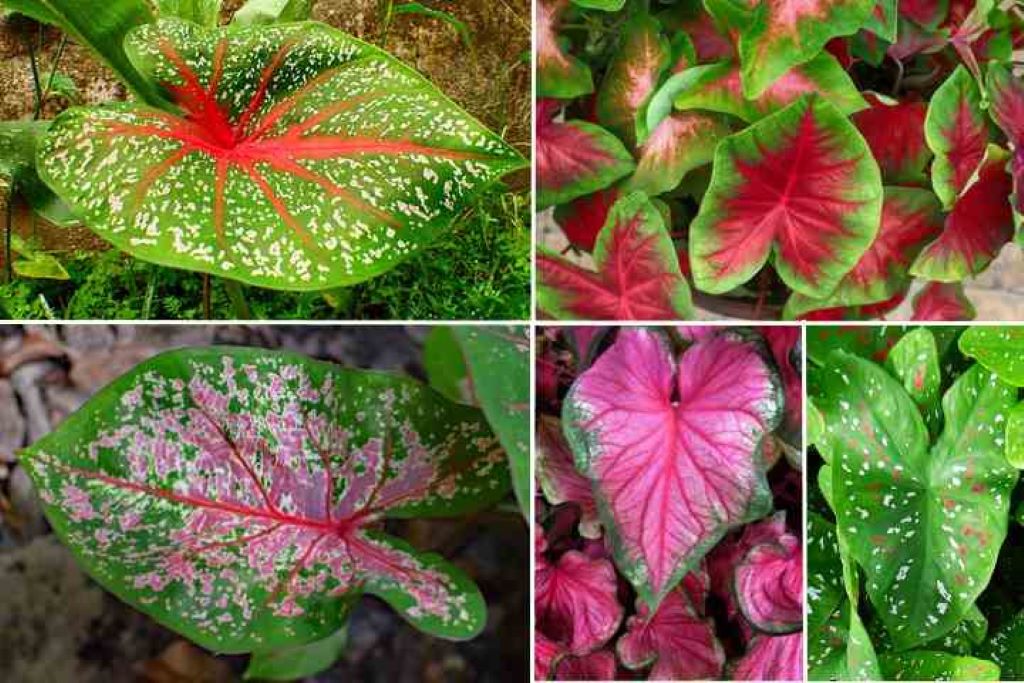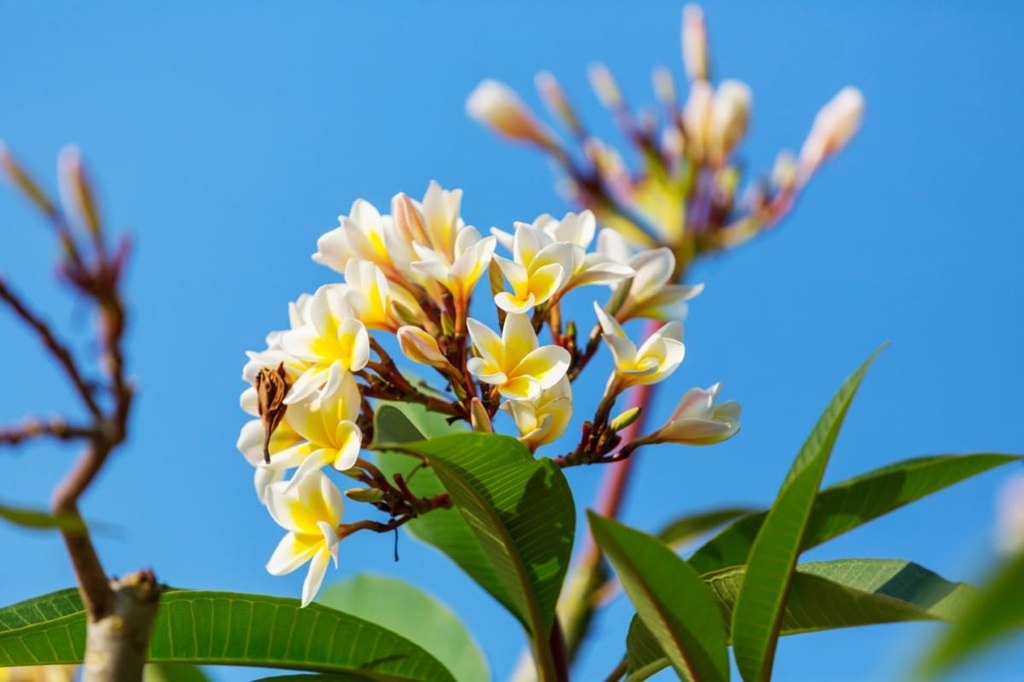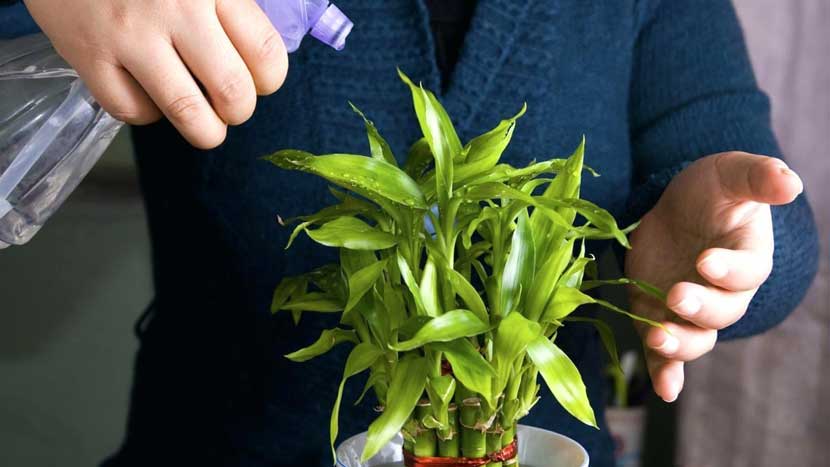Tropical foliage plants can bring a touch of the tropics to any indoor space. With their large, glossy leaves in lush green hues, these plants evoke a sense of the exotic. Caring for tropical plants may seem intimidating for beginners, but with the proper techniques, anyone can keep them thriving. This beginner’s guide on low tropical foliage plant care covers everything you need to know to successfully grow tropical foliage plants in your home.
Getting Started with Tropical Foliage Plants
Before bringing home your first tropical plant, consider the following tips:
Choose the Right Plant for Your Space
With hundreds of tropical plant species to choose from, select ones suited to your home’s light and temperature conditions. Low-light tropicals like pothos and philodendrons do well in dim corners, while sun-lovers like crotons need a bright, warm spot.
Prepare the Growing Area
Regarding tropical foliage plant care, it’s important to note that they prefer loose, airy potting mixes that hold moisture but still drain nicely. So, when selecting a pot for your tropical plant, choose containers with drainage holes and use saucers to catch excess water. This will help ensure that your plant’s soil doesn’t become waterlogged, leading to root rot and other issues.
Learn the Plant’s Requirements
Research your plant’s ideal temperature range, humidity preferences, watering frequency, and other needs. This helps prevent issues down the road.
Have the Right Tools on Hand
Equip yourself with must-have supplies like sharp scissors, pruning shears, and a watering can with a long spout for easy care.
Providing Proper Lighting
Light is the fuel that powers plant growth. Give your tropicals adequate brightness to keep them looking their best:
- Low light plants: Place pothos, philodendrons, crocodile ferns, and others >3 feet from a north or east-facing window.
- Medium-light plants: Boston ferns, prayer plants, and tropical hibiscus do well 3-6 feet from an east or west window.
- Highlight plants: Crotons, yucca, dracaena, and Schefflera need a spot within 3 feet of a west or south window.
- Supplement with grow lights: Use full spectrum LED grow bulbs if natural light is insufficient.
Providing Proper Humidity
Tropicals thrive in steamy, humid air reminiscent of their native jungle homes. Low humidity causes dry, crispy leaves and brown leaf tips. Boost moisture levels with these techniques:
- Run a humidifier near your plants.
- Mist plant leaves daily with a spray bottle.
- Place pots on pebble trays filled with water.
- Group plants together to create a self-contained humid zone.
Aim to maintain 40-60% humidity for most tropicals. Get a hygrometer to monitor levels.
Watering Properly
Consistent watering is critical, but don’t overdo it! Follow these tips:
- Water when the top few inches of soil feel dry. For most plants, this is every 1-2 weeks.
- Water thoroughly until it drains from the pot’s base.
- Let excess water drain thoroughly before returning the plant to its saucer.
- Drooping leaves often indicate under-watering. Overwatering causes yellow, mushy leaves.
- Adjust the frequency based on factors like light, temperature, and humidity.
Providing Proper Temperature
While they hail from the tropics, houseplant varieties don’t need sweltering heat. Maintain temps in the following ranges:
- Daytime: 65-85°F
- Nighttime: 60-70°F
- Avoid cold drafts and sudden temperature drops.
If needed, use a portable heater or oscillating fan to regulate temperatures. Monitor with a thermometer.
Using Proper Soil
Tropicals need a porous potting mix that retains moisture but drains freely. Purchase a commercial blend made for tropicals, or create your mix:
- 2 parts peat moss or coco coir
- 1 part perlite or vermiculite
- Optional: 1 part compost
Avoid using 100% potting soil, as it stays overly wet. Repot plants annually in fresh mix.
Providing Proper Fertilizer
While less crucial than for flowering plants, fertilizer gives tropical a nutritional boost for lush growth. Use a balanced liquid fertilizer diluted to 1/2 or 1/4 strength. Fertilize:
- During the active growing season (spring through summer).
- Every 2-4 weeks.
- After watering to prevent root burns.
- Reduce or skip in winter when growth slows.
Ensuring Proper Air Circulation
Stagnant air encourages fungal and bacterial diseases. Position a small fan to blow air over your tropicals gently. Circulating air also helps strengthen plant stems and foliage. Just avoid directing cold drafts from fans onto the plants.
Proper Pruning and Training
With the proper pruning, you can shape your tropicals into showstopping specimens:
- Remove yellowed, damaged, or dead leaves and stems. Make cuts just above the leaf nodes.
- Pinch back leggy stems to encourage bushier growth.
- For climbing vines, gently guide them onto trellises or posts.
- Prune wayward branches on tree-like plants like yucca and dracaena to create a pleasing form.
Common Pests and Diseases
Quarantine new plants and keep a close eye for signs of trouble:
- Mealybugs – Cottony blobs in leaf crevices. Wipe away with alcohol.
- Aphids – Yellow, deformed foliage. Remove by hand or use insecticidal soap.
- Fungal diseases – Leaf spots, powdery white coating. Improve airflow and reduce watering.
Isolate affected plants to prevent spread. Discard severely infested ones.
When to Repot
As your tropicals grow, they’ll need more space for their spreading roots. Repotr them:
- When roots poke through the drainage holes or increase over the soil surface.
- When the potting mix seems depleted, often every 2-3 years.
- In early spring, before the most active growth period.
- Only one size up to avoid root shock. A 2-4 inch increase is ideal.
Common Tropical Foliage Plants
Here are some top picks to start your tropical plant collection:
Philodendrons
These famous split-leaf climbers are unfussy and elegant. Try the heartleaf philodendron or the ruffled-edged philodendron bipinnatifidum.
Pothos
An undisputed low-light champ, pothos varieties like golden and marble queen pothos trail gracefully.
Crotons
For drama, go bold with these colorful, multi-hued stunners that bring the tropics home.
Chinese Evergreen
Subtle elegance defines this easy-care, low-light beauty with patterned leaves. Aglaonema is a top choice.
Calathea
Add bold texture with Calathea’s painted leaves. They double as living works of art.
Displaying Your Tropicals with Style
Now for the fun part – using these gorgeous plants in your home decor!
- Show off bushy specimens on plant stands.
- Suspend smaller pots from macrame hangers.
- Place trailing vines on shelves. Let them flow over the edges.
- Use large-leafed climbers to divide and define spaces.
- Group compatible plants on console tables or mantels for impact.
- Add height variety by staggering pots on shelves.
Let your imagination run wild and create your lush indoor jungle!
Maintaining Healthy Tropicals: A Summary
Caring for houseplant tropicals isn’t complicated with the fundamentals covered. To recap:
- Pick suitable plants and give them conditions mimicking the tropics.
- Situate them in appropriate lighting (with supplementation if needed).
- Provide consistent water when the topsoil dries out.
- Boost humidity through misting, grouping, and pebble trays.
- Give them warm temps, air circulation, and occasional fertilizer.
- Repot when rootbound and prune to shape as desired.
- Watch for pests like mealybugs and aphids.
- Display with creativity and style!
Consistency and attentiveness are key. Observe your plants daily and adjust care as needed. With the right balance of light, water, humidity, and care, anyone can succeed with tropical foliage plants!
Frequently Asked Questions
What are some signs my plant needs more humidity?
Low humidity may be the culprit if your tropical plant has brown, crispy leaf edges, drooping foliage, or dull-looking leaves. Other signs include slowed growth or leaves that curl. Boost moisture levels by misting frequently, using pebble trays, running a humidifier nearby, and grouping plants.
How can I increase humidity for just one or two plants?
Create a mini greenhouse by placing the pot on a water-filled pebble tray for just a plant or two needing added moisture. Top the pot with a plastic bag or cloche to hold in humidity. Mist the leaves daily for an extra hydration boost. Just remove the covering periodically so the plant gets fresh air circulation.
What should I do if my tropical plant gets leggy?
If your tropical plant shoots up long, weak stems with sparse leaves. It likely needs more sunlight. Move it to a brighter spot if possible. You can also prune back the leggy growth above a leaf node to encourage bushier new shoots. Try pinching off stem tips periodically to maintain a fuller shape, too. A dose of plant fertilizer may help produce denser growth.
How do I repotr a tropical plant rootbound in its pot?
Carefully remove the rootbound plant from its pot and loosen the outer roots with your hands or a chopstick. Prune any excessively long or tangled roots. Choose a slightly larger pot and fill it 1/3 with fresh potting mix. Place the plant inside and fill in around the roots with more mix. Make sure it sits at the same soil level as before. Water well after repotting and place it in partial sun while it recovers from the root disturbance.
What should I do if my tropical plant has pests?
At the first sign of pests like spider mites, mealybugs, or scale, isolate the affected plant to avoid spread. Wipe insects away with a cotton ball dipped in rubbing alcohol or insecticidal soap. Remove badly infested leaves. Apply neem oil or other organic pesticide according to label directions. Be sure to follow up with repeat treatments to eliminate the pests. Prevent future problems by keeping plants healthy and inspecting regularly for hitchhiking bugs.
Conclusion
Tropical foliage plant care can be quite different from regular houseplant care. Tropical plants excite indoor decor with their bold foliage and verdant colors. While they require specialized care compared to houseplants from temperate regions, don’t let that intimidate you. Following the fundamentals covered in this guide, you can quickly grow lush, thriving tropical plants in your home.
Start with adaptable beauties like philodendrons, pothos, and Chinese evergreens. Give them bright, indirect light, consistent watering, and humid conditions. Enhance your indoor jungle by selecting the perfect pots and planters for your tropical foliage; with pebble trays and misting to boost humidity, regular pruning and pest control, and repotting when rootbound, you’ll create a stunning mini-rainforest and grow exotic plants like a pro.







